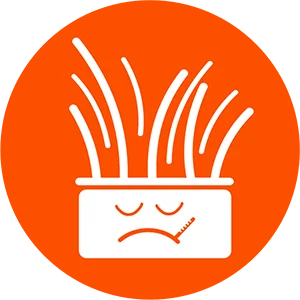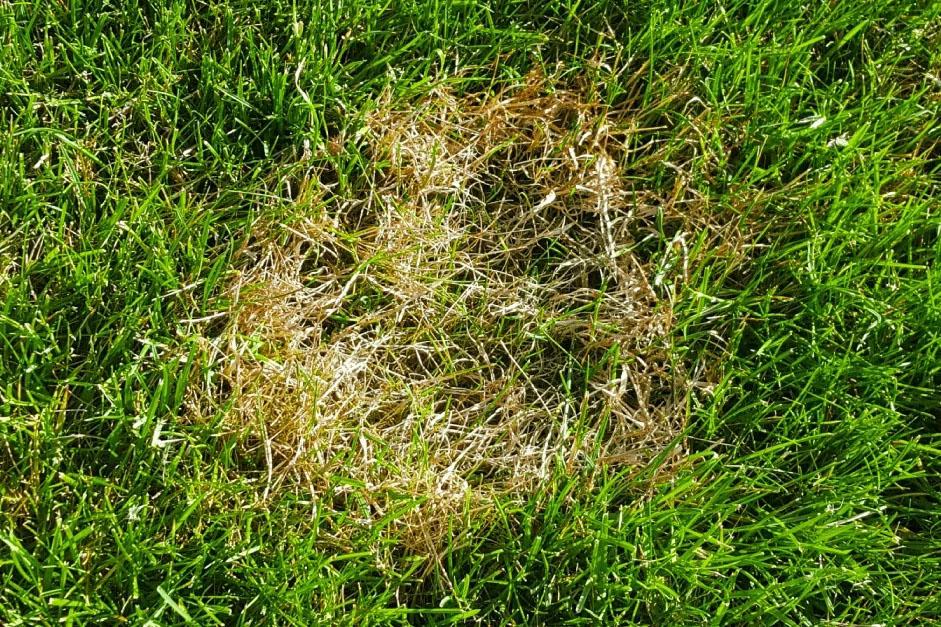Applying Lawn Fungicide Treatments in South Charlotte, NC
Fight Grass Discoloration with Fungicide for Your Lawn
Do you struggle to get your lawn as green as you would like it to be? If you have discolored sections of grass, your lawncare routine may not be to blame. Fungal growths on lawns can cause them to look dead, forming brown or yellow patches across your lawn. While this can be discouraging to see, fungicide treatments are a way to combat these lawn diseases when properly applied. While the best way to control a lawn disease is multifaceted, getting ahead of a spreading disease is critical to limiting the damage it will cause. Lawn Pride of South Charlotte offers lawn fungicide treatments in South Charlotte, NC, and the surrounding areas. Learn more about our lawn fungicide treatments.
Identifying Your Kind of Lawn Fungus
It’s crucial to deal with a fungal invasion of your lawn as quickly as possible. The first step in the fight against fungus is to identify the specific type and apply a fungicide before the fungus gets out of control. There are more different types of fungi than you can count. So, identification can be a problem for the average person. Luckily, Lawn Pride of South Charlotte’s lawn care specialists are trained to select the most effective fungicide to control the spread of disease in your lawn. Disease in turf is influenced significantly by rainfall, temperature, humidity, cultural practices, and the environment in your area. Some of the most common types of lawn fungus include the following:
- Brown patch lawn disease
- Yellow patch lawn disease
- Zoysia patch lawn disease
- Summer patch lawn disease
- Take-All patch lawn disease
- Dollar spot lawn disease
- Snow mold lawn disease
- Slime mold lawn disease
- Leaf spot lawn disease
- Pythium lawn blight
- Red thread lawn disease
- Fairly Ring lawn disease
- Necrotic ring spot lawn disease
- Powdery mildew lawn disease
- Rust lawn disease
- Fusarium patch lawn disease
- Stripped smut lawn disease
- Crown rot anthracnose
Disease tends to return to the same lawns year after year without significant changes in cultural practices and the introduction of disease resistant grass types. As such, our technicians may recommend you add the fungicide program to your regular program to ensure we are able to take a more proactive instead of reactive approach to limiting disease activity in your lawn.

What Causes Lawn Fungus to Develop?
In order to win the war against fungal disease in your yard, you need to first understand the lifecycle of a fungal infection. Fungi only form when certain situations arise. So, when you know how they start, you can successfully combat them with fungicides for lawns and other interventions. Fungal spores are present in almost every yard, but they only become an infection when there are three specific conditions. The conditions for a fungal lawn disease include the following:
- Presence of Pathogens – For a fungal disease to take root in your lawn, spores from that type of fungus must be present. You can think of spores like the seeds of a fungal infection.
- Susceptible Hosts – Even if certain fungal spores are present, they may not turn into a full-blown disease if your type of grass is not vulnerable to that type of fungus. Some kinds of grass are resistant to some kinds of fungus. So, the disease will only develop if your grass is a susceptible host to that type of fungus.
- Environment Conditions – Each type of fungi requires the right conditions for it to grow and take over your lawn. If the environment is too dry, too hot, or too cold, the fungus may not spread.

Frequently Asked Questions about Fungicide Treatments
It can be frustrating and confusing when you suspect that a fungal disease is invading your lawn. Lawn Pride of South Charlotte wants to help you make the unsightly lawn fungi in your yard disappear. To get you started, we have provided the answers to a few of the most common questions we get about lawn fungicides.
How Can I Prevent Fungal Lawn Disease?
Fungicides are best applied preemptively before a fungal disease takes over your lawn. Once a fungal disease is present, fungicides are used to slow down the spread of the disease and allow for cultural control actions, proper irrigation, and favorable weather to eliminate the conditions that allow the disease to thrive. Some tips for preventing the growth of a fungal lawn disease include:
- It is important to include disease-resistant cultivars of grass in your lawn. While not all cultivars are resistant to all diseases, mixing multiple types will limit the damage a disease can cause in your lawn.
- Avoid removing more than a third of your grass length when you mow.
- Mow regularly, keeping your lawn approximately 3.5 inches tall.
- Water in the early mornings, giving your grass time to dry during the hotter parts of the day.
- Ensure that your yard gets 1-1.5” of water every week.
- Aerate your lawn two times per season to break up the thatch and allow for proper air circulation in the root zone.
- If a disease has been identified in your lawn, we recommend you bag your lawn for two to three weeks to remove infected grass blades. This will allow your lawn to recover quicker without re-infection. It is important that you dispose of yard waste in accordance with your local ordinances.
- Sometimes taking a leaf rake and raking the diseased area will help to open up the grass blades and allow the area infected to dry out. Remove leftover grass and dispose of it properly.
When Is the Best Time of Year for a Fungicide Treatment?
Fungicide treatments are most effective when applied early on in the lifecycle of a fungal disease. We recommend fungicide treatments as a preventative measure every month between early spring and late fall. Fungicide treatments can still be very useful after a fungal infection has taken over your lawn.
What Is Brown Patch Fungus?
Brown patch fungus is one of the most common forms of lawn fungus. It creates circular areas of born grass and is commonly surrounded by dark, narrow rings. Rhizoctonia solani spores are the seeds that form brown patch fungus, and after they begin to spread, the growth can be surprisingly rapid. Lawn Pride of South Charlotte has brown patch fungicides designed to combat this type of disease.
Get a Free Lawn Fungicide Estimate Today!
Let us help you keep your lawn looking healthy and green. The lawn care team at Lawn Pride of South Charlotte has a unique and thorough understanding of the problems facing grass growth throughout the Charlotte area. We have a longstanding commitment to customer service, always answering questions and treating your property with the same respect we would expect. Request a free lawn fungicide treatment estimate today!



